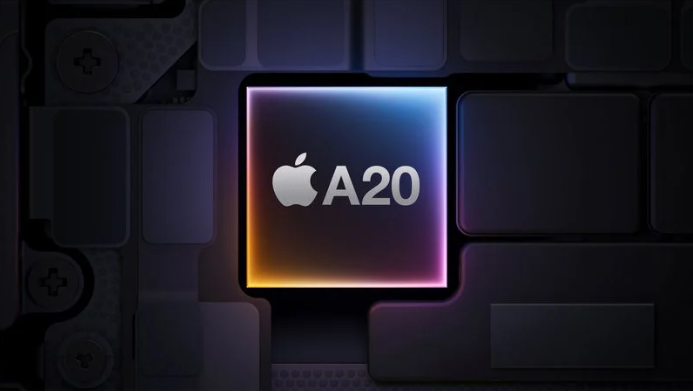A Glimpse into Apple’s Next Big Move
Just when you thought smartphones couldn’t get any smarter, Apple drops another bombshell. The iPhone 18, expected in 2025, will feature the world’s first mass-produced 2nm chip – the A20. Sounds cool, right? But this leap forward in performance might just come with a leap in price too.
Why 2nm is a Big Deal
Think of the 2nm process like squeezing more lanes into a highway without widening the road. It allows more data to travel faster, with less power. It’s a game-changer – faster apps, smoother performance, and better battery life. But, building this highway costs a fortune.
Understanding the 2nm Technology
What Does “2nm” Really Mean?
When techies talk about “2nm,” they’re referring to the manufacturing process used to create semiconductors. Nanometers (nm) are units of measurement that describe the distance between transistors. The smaller the number, the more transistors can fit on a chip – meaning more power and less energy consumption.
Comparison with 3nm and 5nm Technologies
Apple’s current devices use 3nm tech. Before that, it was 5nm. Each transition gave us noticeable performance upgrades. 2nm takes things even further – we’re talking huge leaps in speed and battery life. But going smaller is increasingly complex – and expensive.
How Smaller Transistors Make a Difference
Smaller transistors = more transistors = more power. That’s the math behind it. With 2nm, chips can perform more calculations in less time, and with less heat. The real-world result? Apps open faster, games run smoother, and your phone doesn’t get hot in your hand.
The A20 Chip – Apple’s Next-Gen Silicon
Anticipated Features of the A20 Chip
The A20 is expected to be a beast – blazing-fast CPU, incredible GPU for graphics, and a Neural Engine that’ll blow AI and machine learning tasks out of the water.
Performance Improvements You Can Expect
Early leaks suggest we could see up to a 25–30% improvement in performance compared to the A17 chip. That means faster multitasking, better gaming, and enhanced AI features.
Power Efficiency and Battery Benefits
Here’s the good part: not only will the phone be faster, it will also sip power more efficiently. Expect longer battery life – a big win for those of us constantly searching for chargers.
TSMC and Apple – A Strategic Alliance
TSMC’s 2nm Production Plans
Taiwan Semiconductor Manufacturing Company (TSMC) is the brain behind Apple’s chips. They plan to start producing 2nm chips by the end of 2025. And guess who’s first in line? Yep – Apple.
Apple’s VIP Status in Chip Supply Chain
Apple is TSMC’s biggest customer. That VIP status means it gets early access to the newest chip tech. But it also means Apple pays a premium to be first.
New Facilities and Infrastructure Investments
TSMC is building not one, but two massive facilities to handle 2nm chip production. They’re even planning a third. That’s billions in investment – and someone’s got to foot the bill.
Impact on iPhone 18 Pricing
Why 2nm Chips Cost More to Make
The newer the tech, the more it costs. Fabricating 2nm chips requires new tools, cleaner environments, and more precise machinery. All this translates to skyrocketing production costs.
How Apple Might Pass the Costs to Consumers
Apple’s a business – and businesses don’t eat costs. It’s almost certain that iPhone 18’s price tag will go up. Possibly $100–$200 more, depending on tariffs and other factors.
Historical Trends in iPhone Price Increases
From the iPhone X onwards, every major hardware leap has come with a price bump. Apple customers are no strangers to that, but 2025 might be the biggest jump yet.
The Role of Global Politics and Tariffs
U.S. Tariffs and Apple’s Tight Spot
Adding to Apple’s headache are U.S. tariffs on imports from China. Although Apple got a brief break, the tariff storm isn’t over yet.
Trump’s Comments on Tariffs
Former President Trump recently stated that no company, including Apple, is getting special treatment. That means new levies could hit devices hard – and again, raise prices.
Potential Cost Burden on Apple and Users
Apple might absorb some costs short-term, but long-term, users will likely pay more. Expect base models to start well north of $1,200 if things don’t change.
Market Reactions and Consumer Sentiments
Are Consumers Ready for Higher Prices?
Some fans will line up regardless of price, but for many, the upgrades will need to justify the cost. If Apple delivers real-world benefits, people may swallow the price hike.
Competitive Landscape – Samsung, Google, Others
Samsung and Google are racing to catch up. If they can offer similar performance at lower prices, Apple may feel the pressure.
Will the Tech Be Worth the Cost?
If the performance and battery boosts are as dramatic as promised, early adopters may feel it’s worth every penny. But budget-conscious users might skip or wait for deals.
Long-Term Implications for Apple and Industry
Innovation vs. Affordability Debate
Apple constantly pushes the tech envelope – but at what cost? The iPhone 18 may reignite debates over whether innovation is leaving too many users behind.
Chip Manufacturing Race: Who’s Next After Apple?
Once Apple launches 2nm, others will follow. Expect a domino effect across the tech world – from laptops to wearables.
Environmental and Supply Chain Challenges
Smaller transistors = more complexity = more resource consumption. This tech leap also means new environmental and supply chain challenges Apple must address.
Conclusion: Should You Save Up for the iPhone 18?
In short: yes, if you want bleeding-edge tech and can afford it. The iPhone 18 with a 2nm A20 chip promises to be the fastest, smartest, and most efficient iPhone ever. But it won’t be cheap. Between production costs and political complications, the price is heading north. So start saving – the future of mobile tech is coming, and it’s wearing a hefty price tag.

